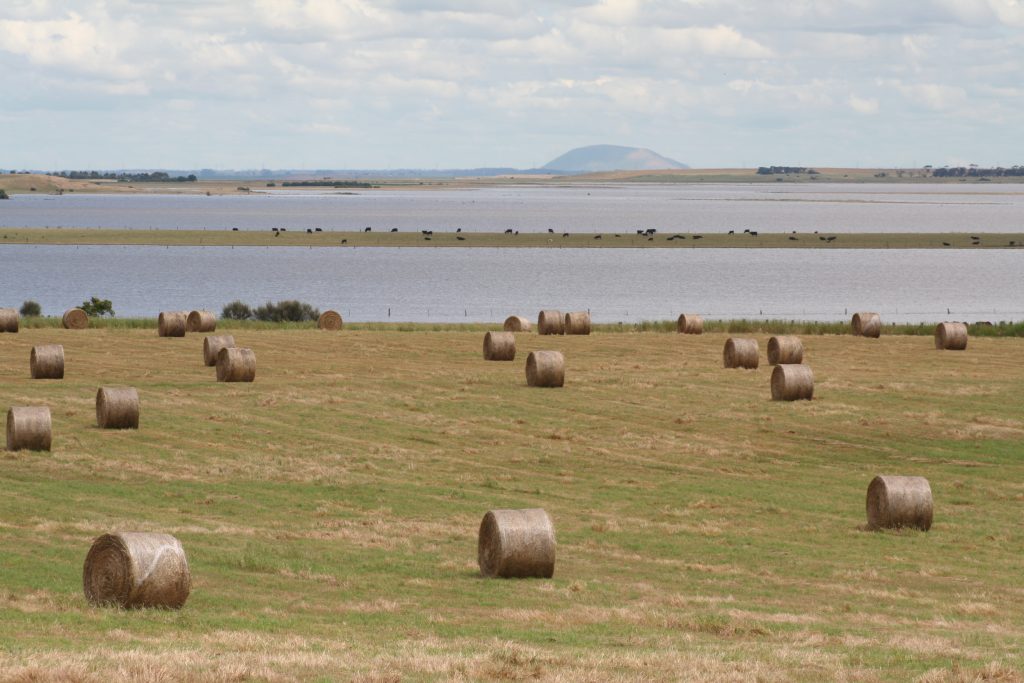Overview
Healthy soils support their natural local ecosystems. Disturbance disrupts these systems. In many cases, disruption leads to unintended consequences for other natural assets – such as waterways, biodiversity, vegetation – or leads to impacts on built assets such as human habitation, roads, pipelines and other structures. The region is subject to a variety of geohazards, among which landslides and erosion have the most significant impact. Over the past fifty years, landslides have resulted in loss of life and many millions of dollars damage to municipal infrastructure and development. Soil erosion by water and wind has also impacted on the region’s waterways and environment, threatening a diverse range of assets from urban water quality to Ramsar-listed wetlands. More assets are placed at risk each year, as the increasing regional population results in an acceleration of anthropogenic modifications to landscapes.

Assessment of current condition and trends
High production soils in the south-west of the region are generally in fair to good condition. However, high fertility, high rainfall, topography and land-use in these localities make these soils prone to landslides, waterlogging and soil structure decline. These soils are also prone to acidification. These soils occur predominantly in the Heytesbury and Otway Coast Landscape Systems. Highly productive red volcanic soils of the north-east of the region are naturally fertile, but prone to acidification.
Medium production value soils, mostly found in the Victorian Volcanic Plains, are the most widespread soil type in the region. They are generally in average condition. Various inputs, like inorganic fertilisers and agricultural lime, are used to manage acidity and maintain, or improve, fertility. These soils are prone to waterlogging and can erode if groundcover is lost or the land is used beyond its capability. Secondary salinity may also affect land and soils for food and fibre, especially on the plains, reducing productivity and potentially impacting other catchment resources. These soils occur predominantly in the Northern Uplands, Basalt Plains and Western District Lakes Landscape Systems.
Lower production value sedimentary soils are generally of lower fertility and in average condition. These soils are geologically older and more fragile; they are poorly structured and more dispersive. They may be more subject to water erosion when exposed through the removal of groundcover or over-cultivation. These soils tend to acidify rapidly when disturbed from their natural state and used for agriculture.
Major threats and drivers of change
Potential threats and/or threatening processes to the health of the region’s soils include:
- climate change
- over application of agricultural fertiliser
- nutrient decline
- acidification
- structure decline
- waterlogging
- soil organic carbon decline
- soil biota decline
- secondary salinity
- landslides
- water erosion
- wind erosion
- soil compaction
- decline in soil microbiology
- disturbance of potential acid sulfate soils
- contamination.
Soils naturally acidify, erode and slip. Natural salinity existed before European settlement and farm development. However, some agricultural practices aggravate these threats. Topography and climatic conditions also influence these threats to soil health.
Across the Corangamite region, potential acid sulfate soils (yet to be disturbed) have been mapped by CSIRO based on probability of occurrence. Overall, the Corangamite region has 0.03% of its total area with high probability (>70%), and 0.02% with low level of probability (5-70%) of acid sulfate soils occurrence. All landscape systems with coastline areas, particularly around estuarine zones, contain areas of high probability of acid sulfate soil occurrence (>70%), as well as upstream of the Barwon River near Geelong. Additionally, the Lake Connewarre Complex wetlands in the Bellarine & Surf Coast landscape system, and the Western District Lakes contain many areas with high probability of acid sulfate soils around the lakes. All other areas of the Corangamite region have extremely low probability of occurrence (<5%), and small distributions.
Landslide susceptibility represents a significant threat to the southern and south-western parts of the Corangamite region. The Otway Coast and Heytesbury landscape systems are the most vulnerable to landslide occurrences, ranging from moderate to very high susceptibility. The adjacent southern boundary of the Barwon Plain Landscape System also faces some moderate susceptibility to landslides, while the rest of the Corangamite region has generally very low susceptibility – particularly along the flat Victorian Volcanic Plains.
Sheet and rill erosions susceptibility across the Corangamite region is highly variable and distributed. The least susceptible land is located in the south-west around Heytesbury, Otway Coast and Barwon Plain Landscape Systems. The land at highest risk of sheet and rill erosion is located in the Northern Uplands, followed by the Basalt Plains. The remainder of the region is generally between moderate to moderate-high sheet and rill erosion susceptibility.
While there is some moderate susceptibility to gully erosion along the waterways of the Otway Coast and Heytesbury areas, these landscape systems generally exhibit the lowest risk. The Northern Uplands and Ballarat City Landscape Systems have a high proportion of land with moderately high risk of gully erosion. The Otway Coast’s low susceptibility to gully erosion could be attributed to its vegetation cover and protection as a public national park, increasing soil health and stability.



